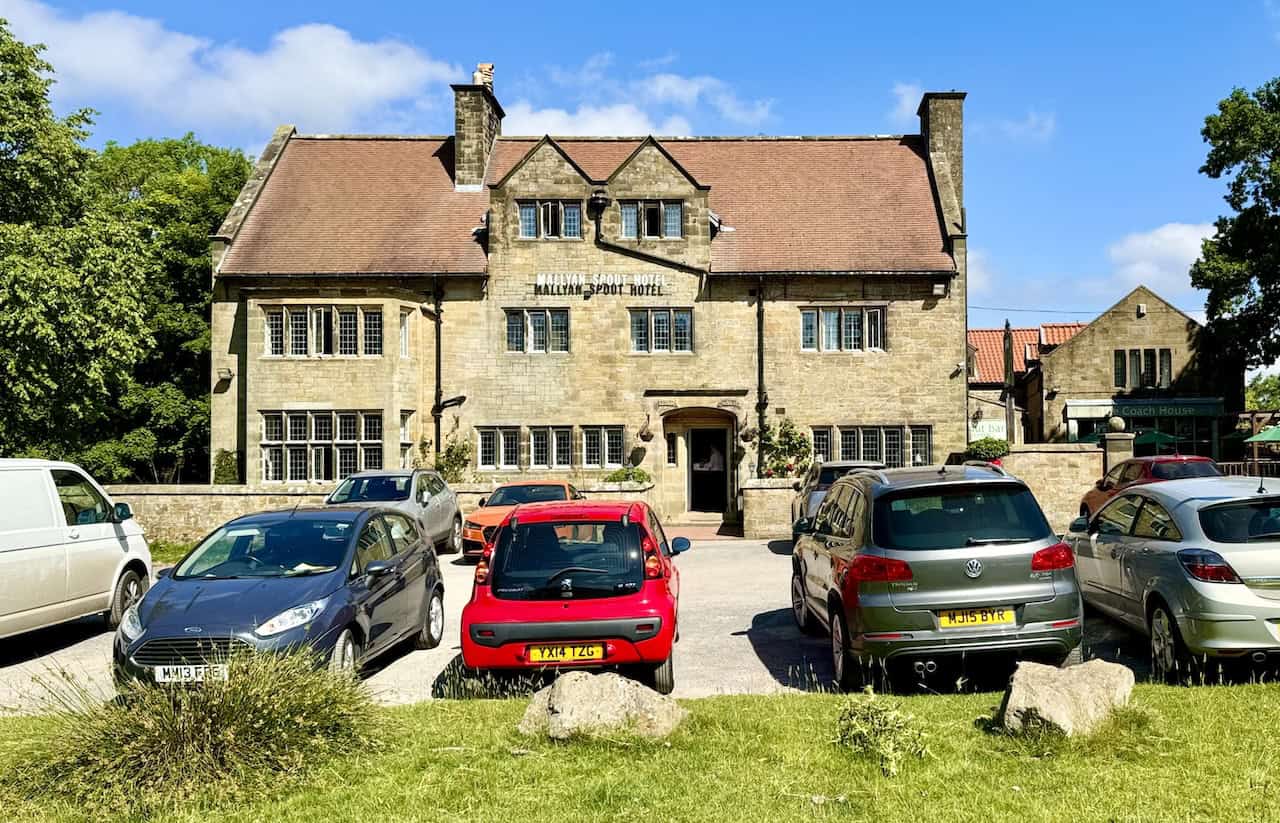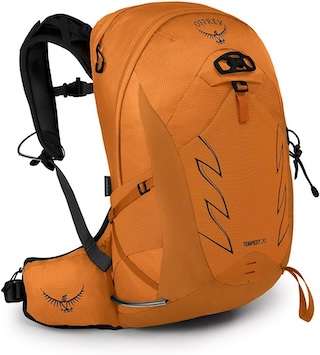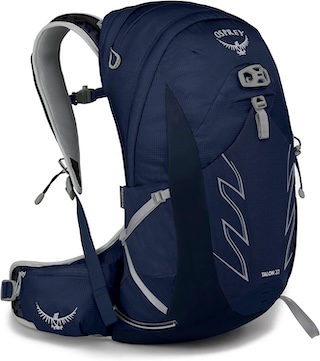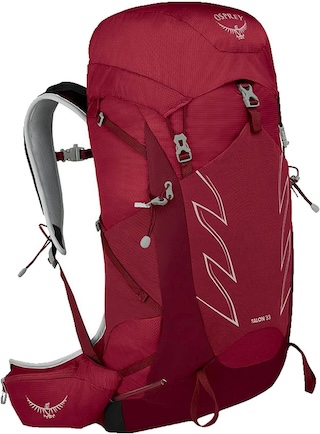Make Memories with a Child Friendly Goathland Walk in the North York Moors
This Goathland walk in the North York Moors begins in the village centre of Goathland. It is a delightful trek of less than four miles (6.4 kilometres), perfect for the entire family, including kids, parents, and grandparents. You’ll find a large car park in the village centre, with toilets adjacent. Although Goathland is a popular tourist destination and can get busy, a secondary car park opens nearby if the main one is full.
First, commence your Goathland walk by leaving the car park and heading to the main road, called The Green. Turn left, following the signs for Goathland Station. On your left, you will soon see Scripps Garage and Funeral Services, followed shortly by the Goathland Hotel on your right. Next, continue downhill, where you can visit the charming Goathland Railway Station. If you’re fortunate, you might even catch a glimpse of a passing steam train. After exploring the station, head back up the hill and proceed straight through the village. You’ll pass shops and cafes on your left, and then the road will bend to the left. Simply continue along the road, enjoying the pleasant footpaths and the scenic views of the village and surrounding countryside.

Continue until you reach St Mary’s Church at the bottom of the road on your left-hand side. Opposite the church is the Mallyan Spout Hotel. The path you need to take is on the right-hand side of the hotel, signposted to the Mallyan Spout Waterfall. Follow this path, which steepens and involves steps near the bottom. When you reach the bottom, turn left, following the signpost for the Mallyan Spout. After reaching the waterfall, you might take a break for coffee or a bite to eat. To continue your Goathland walk, retrace your steps to the signpost, then proceed straight ahead following the route to Beck Hole.
The trail starts with a series of boardwalks through picturesque woodland and gradually ascends, with some steps involved. It might get a bit muddy in wet weather, but it’s not too challenging. At the top, you will emerge into an open area of countryside. Follow the path along the side of a grassy meadow, then enter another woodland and follow the track downhill, with more steps. Emerge from the woodland, and you will soon reach Intake Cottage. Here, you will see a signpost directing you to turn left, following the route to Grosmont.

Soon, you will reach a crossroads with another signpost directing you to your right towards Beck Hole. Follow this path past a large lawn garden on your left-hand side until you reach a minor road. Turn left at this road to explore Beck Hole, where you might enjoy refreshments at the quaint Birch Hall Inn public house and sweet shop. After looking around, retrace your steps back to Intake Cottage.
From Intake Cottage, continue walking along the track, passing straight by the cottage for a gentle uphill route of about three-quarters of a mile (1.2 kilometres) back to Goathland. Eventually, you will reach a set of gates. Continue straight across the road and follow the track signposted to Goathland. Then, you will reach another set of gates where you should turn right, again signposted to Goathland. Soon, you will be back at the car park, completing your Goathland walk. Your whole family is sure to love this enjoyable and scenic hike.
Goathland Walk: Maps and Tools
Visit either the OS Maps website or the Outdooractive website to view this walking route in greater detail. Both platforms offer a range of features, including the ability to print the route, download it to your device, and export the route as a GPX file. You can also watch a 3D fly-over and share the route on social media.
Goathland Walk: Distance, Duration, Statistics
Distance: 3½ miles
Distance: 5¾ kilometres
Duration: 1¾ hours
Ascent: 639 feet
Ascent: 195 metres
Type: Circular walk

Recommended Ordnance Survey Map
The best map to use on this walk is the Ordnance Survey map of the North York Moors Eastern Area, reference OS Explorer OL27, scale 1:25,000. It clearly displays footpaths, rights of way, open access land and vegetation on the ground, making it ideal for walking, running and hiking. The map can be purchased from Amazon in either a standard, paper version or a weatherproof, laminated version, as shown below.
About Goathland
Goathland is a charming village and civil parish located in the Scarborough district of North Yorkshire. Historically part of the North Riding of Yorkshire, it sits in the North York Moors National Park, north of Pickering and off the A169 to Whitby. The village features a station on the steam-operated North Yorkshire Moors Railway.
A Rich History
Goathland stands 486 feet above sea level. It has a recorded history dating back to just after the Norman Conquest, though the Domesday Book does not mention it. The name ‘Goathland’ likely comes from ‘good land’ or ‘Goda’s land,’ with Goda being an Old English personal name. In 1109, King Henry I granted land to Osmund the Priest and the brethren of the hermitage of Goathland, then called Godelandia, for the soul of his mother, Queen Matilda. This event is recorded in a charter held at Whitby Abbey.
In the 19th century, Goathland became a spa town, attracting visitors to its hotels and guest houses. The largest, the Mallyan Spout Hotel, is named after a nearby waterfall, which you’ll encounter on this Goathland walk. Additionally, a caravan site is accessible via the track that served as the railway route from 1835 to 1860. The original railway passed by the Goathland Hotel, which served as a transport hub until the railway moved further east to the newer Goathland Railway Station.
Today, much of the surrounding land belongs to the Duchy of Lancaster. The Duchy’s tenants have had common grazing rights for hundreds of years, allowing their sheep to graze on the village green and surrounding moorland. The Grade II listed St Mary’s Church, built between 1894 and 1896, replaced an earlier church from 1821. Stone from the 1821 church was repurposed for other buildings in the village. The war memorial, made from sandstone and modelled on the nearby Lilla Cross, stands on the village green and received a Grade II listing in November 2021.
Heartbeat’s Famous Setting
Goathland served as the setting for the fictional village of Aidensfield in the Heartbeat television series set in the 1960s. Many landmarks from the series are recognisable, including the shop, garage, the public house, and the railway station. The pub is called the Goathland Hotel but is known as the Aidensfield Arms in the series. After years of interior shots being filmed in the hotel, Yorkshire TV’s Leeds studio built a replica.
Getting Around
The first railway station in Goathland was located at the top of an incline. Named Goathland Bank Top, it was in the village, and carriages were drawn up the incline by a rope-worked drum system. This station closed in 1865 when a newer one opened on a diversionary line to Grosmont. This newer station closed to regular passenger traffic in 1965 but was reopened as part of the North Yorkshire Moors Railway in 1973. The village is 1.2 miles (2 kilometres) west of the A169 road and is served by four buses a day as part of the Yorkshire Coastliner service between Leeds and Whitby.
The North Yorkshire Moors Railway Experience
Goathland Railway Station is part of the North Yorkshire Moors Railway, run by a charitable trust with some paid staff but mostly operated by volunteers. The railway runs nearly all year, including Christmas, and carries over 250,000 passengers annually. It is the second-longest preserved line in Britain, linking Grosmont in the north with Pickering in the south along the route of the Whitby to Pickering line built by George Stephenson in 1835 and upgraded in 1865.
Goathland Walk: My Photos
This is Scripps Garage and Funeral Services in Goathland. It’s a notable landmark, primarily known for its role in the popular British TV series Heartbeat, which aired from 1992 to 2010. The garage was run by the character Bernie Scripps in the series.

The Goathland Hotel is another prominent landmark in Goathland. It was used to shoot many scenes in Heartbeat, where it was called the Aidensfield Arms. One of the gable ends of the pub still has a sign that reads Aidensfield Arms, while the others read the Goathland Hotel.

Although not on the direct route of this Goathland walk, it’s worth walking down to see Goathland Railway Station. Then, you can return up the hill to walk through the village.

Eller Beck flows beneath the bridge near the railway station. Its source is on Allerston High Moor near RAF Fylingdales, about four miles (6.4 kilometres) to the south-east. From Goathland, the beck flows north, then west to join with West Beck to become the Murk Esk, which flows north to meet the River Esk near Grosmont.

This is the bridge that crosses Eller Beck near the railway station. The vintage-style lamp post is one of several around Goathland Railway Station. The plaque on the wall by the side of this lamp commemorates Frances Johnson and reads:
IN MEMORY OF
FRANCES JOHNSON
OF BARNBURGH WHO ENJOYED VISITING
GOATHLAND WITH HER LOVING HUSBAND JOHN
“MAY THIS LAMP BRING BRIGHTNESS HERE
AS SHE DID TO HER FAMILY AND FRIENDS”

Here is Goathland Railway Station, captured from the footbridge crossing the railway line. Opened on 1 July 1865 as part of the Whitby and Pickering Railway, the station’s architecture typifies rural Victorian-era stations, featuring traditional stone buildings, a footbridge, and old-fashioned platform furnishings. It is part of the North Yorkshire Moors Railway (NYMR), a heritage railway operating preserved steam and diesel trains. The NYMR runs between Pickering and Whitby, offering scenic journeys through the North York Moors National Park. The station is well-known for its appearance in various television shows and films, including Harry Potter and the Philosopher’s Stone and Heartbeat.

After exploring Goathland Railway Station, it’s time to head back and walk through the village. As we stroll through Goathland, we encounter the Moors Coffee Shop & Gifts alongside The Village Store and Gift Centre. These charming stone buildings, with their inviting facades, offer a welcoming atmosphere. The coffee shop serves Yorkshire tea, lattes, cappuccinos, and homemade cakes. The village store provides a variety of fine foods, speciality jams, preserves, and a selection of wines, beers, and spirits.

Continuing our Goathland walk, we come across the Aidensfield Stores, which has a distinctive red and cream exterior. This building is well-known for its role in Heartbeat, where it featured as the village’s grocery and provision merchants. The store’s large windows display a variety of memorabilia, making it a nostalgic stop for fans of the show.

We pass the Goathland Tea Rooms & Tea Garden. The tea rooms offer a delightful selection of teas and homemade treats. The tea garden behind provides a lovely outdoor space to relax if the weather is nice. We decided not to stop for morning coffee but returned for lunch in the tea garden at the end of our walk.

St. Mary’s Church in Goathland is a beautiful, traditional stone building with a square tower featuring a clock. Its robust structure and gabled roof are characteristic of English parish churches. The churchyard, filled with neatly trimmed hedges and gravestones, all lit up by the morning sunshine, adds to the historic atmosphere of our walk.
St. Mary’s Church has a long history dating back to the end of the 11th century when a group of monks established a hermitage near Eller Beck. The original chapel, known as ‘St Mary at Godeland’, was likely close to this hermitage. By 1568, records mention St. Mary’s Chapel, which provided a place for local worship and burials. Over the centuries, the chapel evolved to serve the spiritual needs of the local community.
The present building, designed by William Brierley of York, was completed in 1896. It replaced an earlier Georgian church built in 1821. This Victorian-era structure was funded in part by Malcolm McEacharn, a London shipbroker, as a memorial to his wife Ann Peirson, a Goathland native. Inside, the church features notable woodwork by Robert ‘Mouseman’ Thompson, including the panelled altar and reredos, complete with his trademark mouse carvings.

Opposite St. Mary’s Church is the Mallyan Spout Hotel, a charming 19th-century country house offering high standards of service and luxury accommodation. It features picturesque gardens with views across the Esk Valley and is a popular destination in Goathland. The café on the right-hand side of the hotel is the Coach House. To continue our walk, we need to walk through a gate and down a path by the right-hand side of the Coach House. There is a signpost for the Mallyan Spout Waterfall.

The path from the back of the hotel starts fairly level by the side of a field and then enters the woods, where it descends quite steeply down a series of steps to reach West Beck at the bottom. Just a word of caution: the path can get quite muddy in wet weather. Don’t forget your wellies or walking boots!

At the end of the path down from the hotel, there is a bench and a signpost by the side of the beck. To the left is the route along the flagged stone path to the Mallyan Spout. To the right is the route along the boardwalk to Beck Hole. For this walk, we will initially turn left to look at the waterfall, then return to this point to continue our walk to Beck Hole.

The path from the bench at the bottom of the steps to the waterfall is only about 130 metres (430 feet) and follows along the side of West Beck.

The path to the waterfall becomes rocky towards the end, and these rocks can sometimes be a bit slippery when wet, so take care. Just a tiny bit of scrambling is needed, but it’s not too difficult, and the kids will love it.

Nearly there! Just around the corner on the left is the Mallyan Spout Waterfall.

The Mallyan Spout Waterfall is the tallest waterfall in the North York Moors National Park, with a height of approximately 21 metres (70 feet). The waterfall is fed by West Beck, which continues its journey north to become the Murk Esk.

After our short detour to look at the waterfall, we retrace our steps and continue our way to Beck Hole on the next stage of our walk.

The path follows West Beck north through the wooded valley, initially on a series of boardwalks. Then it leads uphill out of the woods. There are several sets of steps, but it’s straightforward and enjoyable.

Emerging from the woods up out of the valley, the path follows along the side of a grassy meadow. This walk is family-friendly and suitable for kids.

After more walking through woodland down a series of steps and small inclines, we emerge from the woods, and Intake Cottage comes into view.

Near Intake Cottage, there is a signpost. Right to Goathland and left to Grosmont. We’ll return to this point later in our walk, but for now, we’re going left to have a look at Beck Hole.

Soon after following the track from Intake Cottage, a signpost indicates Combs Wood to the left, but we’re going right, shown as Beck Hole. A track leads past the large lawned back garden of a Beck Hole property. It’s through the gate and left to Beck Hole.

The Birch Hall Inn in Beck Hole is a quaint and historic pub, renowned as one of Yorkshire’s smallest pubs. Officially founded in the 1860s, the pub features two small bars and a sweet shop in the middle. The building is a Grade II listed structure, noted for its well-preserved interior that retains much of its original character from the 1930s. The main bar, known as the ‘Big Bar’, is housed within one of the original cottages (the white building on the left), while the ‘Little Bar’ was added post-World War II in the Victorian extension (the stone building on the right).

This is the narrow road bridge that crosses Eller Beck in Beck Hole.

Beck Hole is a picturesque village, and these are some of the buildings around the village green. Most of the structures in the village are listed. The origins of Beck Hole can be traced back to the Middle Ages. It was located within the Forest of Pickering, which started to be cleared in the 13th century. The first recorded mention of the village, originally named Amerholm, dates to the late 16th century, noting the presence of a single farmstead.
The Whitby and Pickering Railway opened in 1836, featuring an incline from Beck Hole to Goathland operated by a rope-hauled cable railway. A railway station was established, and the incline was later replaced by a deviation in 1865. A branch line to Beck Hole remained in use until it closed in 1951.
In the late 1850s, the Whitby Iron Company was established and began extracting ironstone in the Beck Hole area. Two blast furnaces were built and started producing iron in 1860. A row of 33 cottages was constructed for industrial workers, and the Birch Hall Inn was expanded and received a licence. However, the iron production operation was short-lived due to a fault in one of the furnaces and landslips at a mine, ceasing operations in 1864. The furnaces were put up for sale in 1876 and sold in 1888, subsequently being demolished, along with the workers’ terrace.

After leaving Beck Hole, we retrace our steps to Incline Cottage, then follow the gentle uphill path to Goathland. It is all well signposted and about three-quarters of a mile (1.2 kilometres) long.

Eventually, we can see the gates located on the minor Darnholm to Goathland road in the distance.

The route is through the gates, over the road, and straight on. A signpost shows Rail Trail and Goathland.

After a little while, the track leads to another set of gates at another road. A right turn and a short walk along the road lead back to the car park, ending this Goathland walk. However, we returned to the Goathland Tea Rooms & Tea Garden for a bite to eat. A signpost reads Rail Trail, Goathland, and Toilets.

This is the view from those gates looking back at the final stretch of the incline from Intake Cottage. A sign explains that the incline once carried trains up and down the steep hillside between Beck Hole and Goathland. The incline was an important part of the Whitby and Pickering Railway, designed by George Stephenson.

After lunch, we took a final photo of the World War I memorial cross on the village green.

Highly Rated Osprey Hiking Backpacks for Outdoor Enthusiasts
Osprey’s reputation for crafting high-quality hiking backpacks is well-established, offering a range of options that cater to both men and women. The following four backpacks stand out for their excellent sales and customer ratings on Amazon, making them a top choice for outdoor enthusiasts seeking reliability and comfort. As an Amazon affiliate, I may earn a small commission from any purchases made through the links provided. This helps support the upkeep of this website. Rest assured, you won’t pay a penny extra, but your purchase will contribute to keeping my site running smoothly. Happy walking!

Osprey Tempest 20 Women’s Hiking Backpack
The Tempest 20 stands out as the ideal solution for day-hiking, biking, or peak-bagging, tailored specifically for women. It features a panel-loading design for ease of access, complemented by an internal zippered mesh pocket with a key clip for secure storage. Unique to this model are the Stow-on-the-Go trekking pole and LidLock bike helmet attachments, enhancing its versatility. Side stretch mesh pockets, along with an easy-access, expandable stretch mesh harness pocket, offer ample storage. Additionally, it includes a blinker light attachment (light not included) and a large stretch mesh front panel pocket for extra carrying capacity.

Osprey Talon 22 Men’s Hiking Backpack
Designed for the active adventurer, the Talon 22 provides an optimal panel-loading design suitable for day-hiking, biking, or peak-bagging. Key features include dual-zippered panel access to the main compartment and a tuck-away ice ax attachment with a bungee tie-off. It boasts a top panel zippered slash pocket for quick access items and lower side compression straps for load management. An external hydration reservoir sleeve and dual-zippered fabric hipbelt pockets enhance hydration and storage, while a large stretch mesh front panel pocket increases its utility for various activities.

Osprey Tempest 30 Women’s Hiking Backpack
The Tempest 30, designed with a women’s-specific fit, is a streamlined top-loader ideal for both extensive day trips and light-and-fast overnight adventures. It includes a fixed top lid with an external zippered slash pocket and an under-lid zippered mesh pocket with a key clip for organised storage. The pack features a tuck-away ice ax attachment with a bungee tie-off, dual upper and lower side compression straps for load adjustment, and an external hydration reservoir sleeve. For added convenience, it offers an easy-access, expandable stretch mesh harness pocket and dual-zippered fabric hip-belt pockets.

Osprey Talon 33 Men’s Hiking Backpack
The Talon 33 is engineered for dynamic movement, making it the perfect streamlined top-loader for committed day trips or light-and-fast overnight excursions. It features top load access to the main compartment for easy packing and retrieval. The backpack is equipped with a large stretch mesh front panel pocket, Stow-on-the-Go trekking pole attachment, and stretch mesh side pockets for versatile storage options. Additionally, an easy-access, expandable stretch mesh harness pocket and dual-zippered fabric hip-belt pockets offer convenient storage solutions for essential gear.